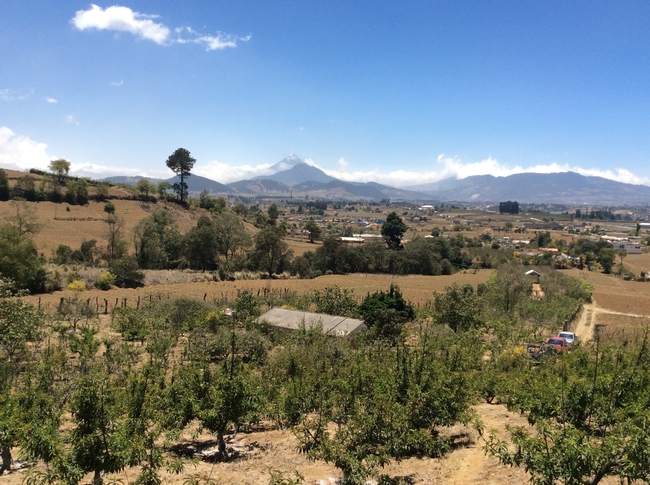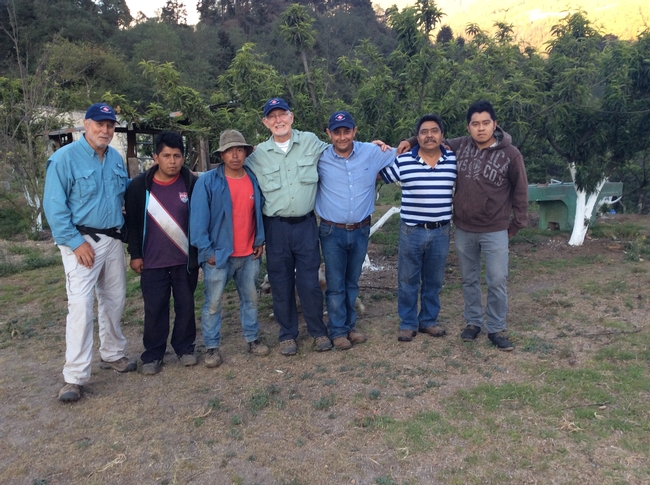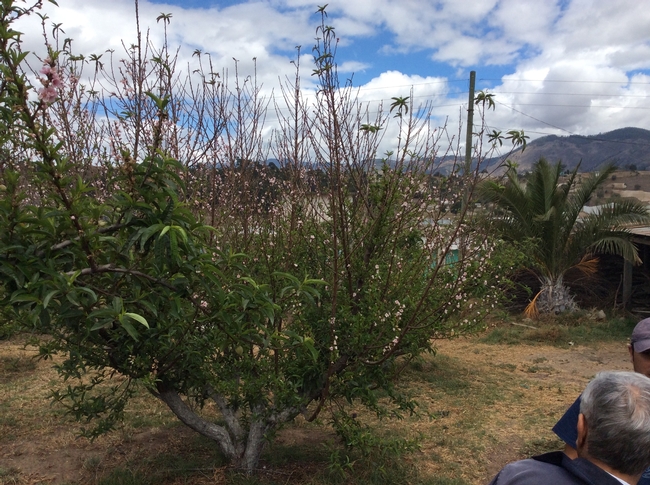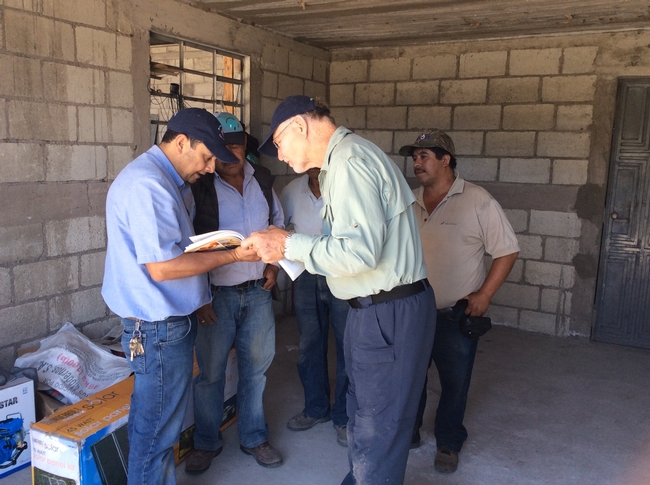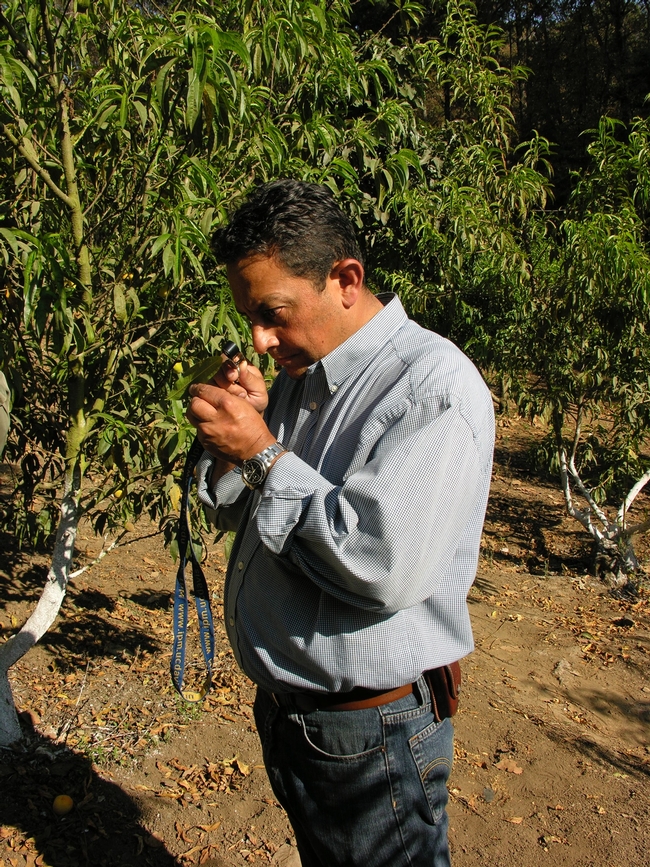IPM information extends to apple and peach growers in Guatemala
Did you know that apples and peaches are two important fruit crops planted in the highlands of Guatemala? More than 7,600 acres of apples and 6,100 acres of peaches are grown. However, with warm winters that don't allow for the winter chilling time that these crops require for optimal growth, and with freezing spring temperatures along with summer rains, growing apples and peaches in this area is often a challenge for growers.
As part of the Farmer-to-Farmer Program sponsored by the Partners of the Americas and funded by the United States Agency for International Development (USAID), retired UC IPM entomologist Walter Bentley and Washington State University entomologist Jay Brunner traveled to Guatemala in April to help growers improve the peach and apple industry. Their primary goal was to identify pest problems and possible solutions to help peach and apple growers improve fruit production, taking into account the region's unique climate.
“The most important issues were horticultural,” said Bentley. “The region's biggest need is for a horticulturist or plant pathologist.”
Some of the peach varieties require 300 to 500 chilling hours.
“Peach trees at elevations of 7,500 to 9,000 feet above sea level bloom for 2 months whereas bloom in California lasts just 10 days," he said. "You would get situations where the top half of the tree was in bloom while the bottom half was already producing fruit.”
This creates an environment favoring disease development and causing further problems for growers if the disease was severe enough to warrant a pesticide treatment. If a tree was partially in bloom while simultaneously producing fruit, it would have to be hand-sprayed multiple times so that the portion of the tree that warranted treatment was sprayed.
Although most of the important issues that Bentley and Brunner found were horticultural or disease-related, there were some insect problems. Many growers had stink bugs and other plant bugs attacking their trees. Spider mites and predatory mites were also observed. Growers sprayed pyrethroids after bloom to help prevent plant bug damage. However, applying pyrethroids reduced predatory mites, leading to an outbreak of spider mites.
After spending seven days touring four to six farms per day and looking at various practices, Bentley and Brunner spent the next week leading workshops for farmers and discussing integrated pest management (IPM) approaches to managing problems. Using the UC IPM website, specifically the Pest Management Guidelines for apples and peaches, Bentley and Brunner were able to teach sampling methods, stress the importance of correct pest identification, and encourage growers to spray with the least toxic and disruptive products. Bentley and Brunner were surprised by the large variety of pesticides available to growers, but were encouraged that farmers were willing to spray only when necessary while being open to other methods of control.
Both entomologists plan to keep the lines of communication open and feel the observations made during this trip could lead to future visits where sustainable pest management programs can be put into action. For example, predatory mites were observed in several of the orchards. This could lead to developing a biological control program to control spider mites.
Bentley and Brunner were impressed by the staff that took them around to each farm and by the growers who were receptive to new ways of managing pest problems. The farmers were very appreciative of the advice they received and were very generous. “Everywhere you went people wanted to share what they had,” said Bentley. “They are amazing people.”
Humbled by the experience, Bentley reflected, “I'm glad I went. I've been given a lot in my life and wanted to give back a little.”


